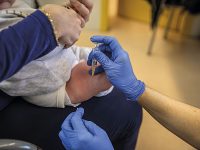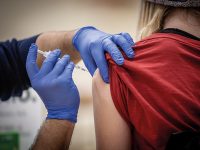The debate on rare diseases
A look at media response
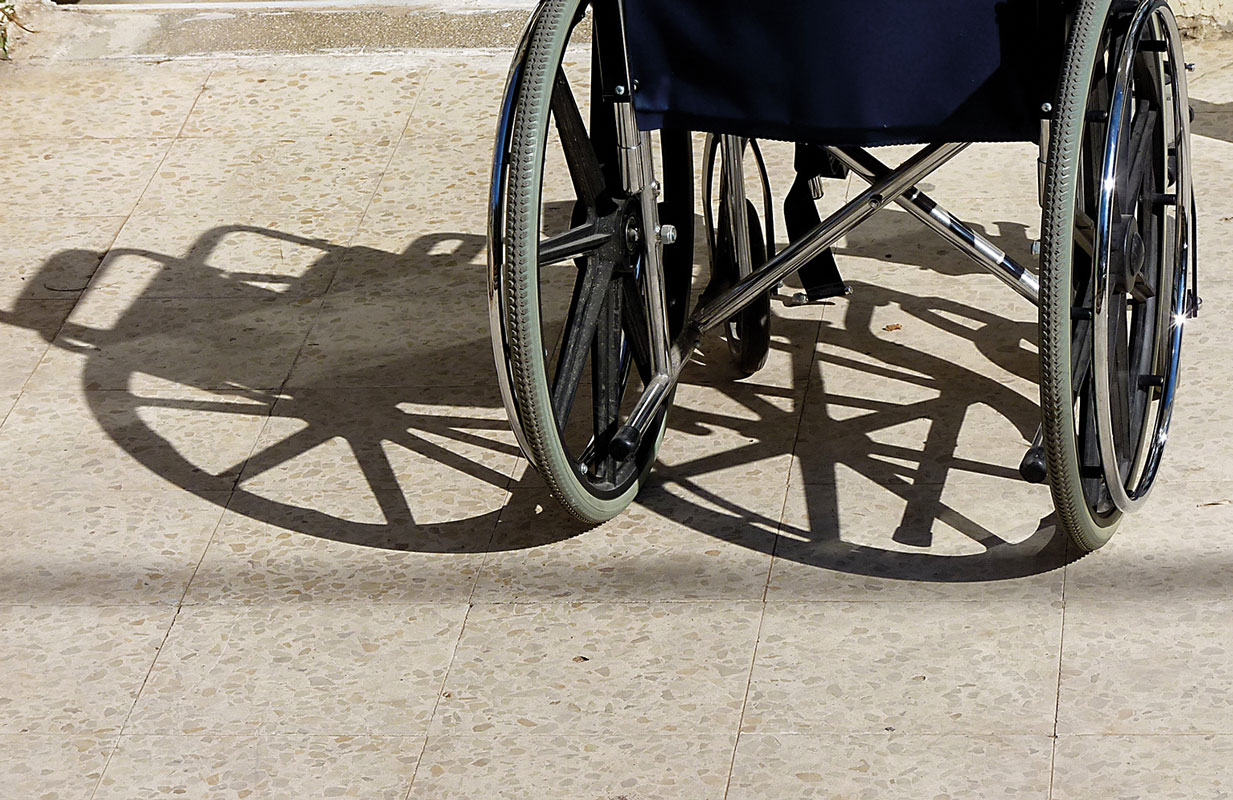
Rare diseases (RDs) are those that affect fewer than five people in every 10,000. There are around 7,000 RDs, they are difficult to diagnose and very few have a treatment. This article explores how the media report on the arguments and counter-arguments regarding the access to drugs for these pathologies, with critical discourse analysis for the case of Duchenne muscular dystrophy. We concluded that, in times of crisis, the debate polarises around economic arguments (the price of drugs), reinforced by doubts about their healing effectiveness.
Keywords: critical discourse analysis, rare diseases, means of communication, argumentation, orphan drugs.
Rare diseases
Rare diseases (RDs) affect fewer than five people in every 10,000. There are around 7,000 pathologies identified as rare, and a high percentage have a genetic origin. They are sometimes very difficult to diagnose, and very few have a treatment. Although the situation has improved in recent years, research is still insufficient, so the cure or improvement horizon is limited. Social unawareness of RDs can sometimes also be noted in healthcare environments. In addition, many of them are also very serious and highly incapacitating, especially when manifested during childhood.
«There are around 7,000 pathologies identified as “rare”, and a high percentage have a genetic origin»
The Study on the Socio-Sanitary Needs of patients with Rare Diseases and their families (ENSERio, Federación Española de Enfermedades Raras, 2009) revealed that 50% of these people are not satisfied with their health care and that the estimated time to receive a diagnosis is five years. Almost 80% of interviewees said they felt they had received inadequate attention at some point and 77% claimed to have been discriminated against on occasion due to their illness.
However, beyond this information, there is barely any research on the social and humanistic aspects of RDs. Although the study of the process of symbolic construction of these pathologies has already started in the media and in social networks (Armayones, Requena, Gómez, Pousada, & Bañón, 2015; Bañón, Fornieles, Solves, & Rius, 2011), as has the study of the impact they have on doctor-patient interactions (Budych, Helms, & Schultz, 2012), a detailed analysis of the political and economic arguments used in the RD debate is still pending. This is the reason behind the focus of this article.
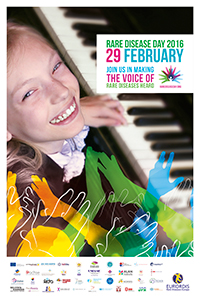
Public discourse on rare diseases
In spite of all of the mentioned above, RDs have found a sort of stable space in the scientific, media, political and institutional, and social agendas in the last fifteen years (Solves, Bañón, & Rius, 2015). The main protagonists, affected people and their families, have made an effort to communicate well, and each of the fundamental groups have differentiated messages. They have tried to convince politicians and decision-makers that RDs should be considered a health priority issue today.
But in reality, the political and the economic debate have always overlapped. An editorial in The Lancet (May 2015) titled Reducing the cost of rare disease drugs described the cost of orphan drugs – developed with public incentives because they are not profitable for pharmaceutical companies – not without certain irony, as an «unwanted side-effect». Similarly, some prestigious scientific journals do not hesitate to publish research headlines such as the following: «Expensive drugs for rare disorders: to treat or not to treat?» (Schlander & Beck, 2009). It is easy to focus on the price of drugs when the economic situation is one of the main concerns of society. However, the association between RD drugs and high prices sometimes generates a metonymy that equals rare diseases and expensive patients, and with that metonymy comes a paradox: the solution (finding a cure) becomes the problem (financing it).
In an interview, the General Secretary of the Spanish Ministry of Health, Social Services and Equality stated: «Some countries have not included the new drugs because they were not cost-effective. We have to accept that the cost of innovation is extraordinarily high, some drugs for rare diseases cost 300,000 euros. The problem is that some of them do not even cure» (Marqués, 2015).
«Rare diseases are those that affect fewer than 5 people in every 10,000»
The fragment is very relevant for debate, because of the speaker’s position and because of what he said. He referred to approved and commercialised drugs. He directly mentions RDs as an example of expensive diseases, and just as importantly: he says some drugs do not even cure. This approach considers only two categories: being ill or being cured, black and white. No greys. We should debate about deep economic perspectives that also consider ethics and science, such as: should we invest in those drugs if they stop the disease, even if they do not cure it? What do we do when they slow the disease? What if they offer a slight improvement?
The authorisation to market an orphan drug does not necessarily involve automatic funding by the administration or insurance companies. In fact, there are important differences among European countries on this matter (Picavet, Annemans, Cleemput, Cassiman, & Simoens, 2012). To secure financing, it is usual to allude to the cost-effectiveness or cost-utility of the drug (Graf & Frank, 2015). In practice, the decision to fund orphan drugs often derives from the combination of «official» factors (therapeutic value, impact on the budget, price and impact in clinical practice) and «unofficial» factors like comparison with other countries, the influence of patients and experts associations, the ascription of the pathology to adults or children, the media’s reaction, the innovative nature of the product, the political climate or ethical considerations (Picavet, Cassiman, & Simoens, 2014).
«The estimated time to receive a diagnosis is five years»
The objective is, precisely, to discover whether or not society is willing to pay an increased price for drugs because they are used for a RD; it is a path to equity through solidarity. In any case, it seems clear that RD patients have the right to be adequately cared for, including treatment (Rombach, Hollak, Linthorst, & Dijkgraaf, 2013). When there is an effective treatment, we have to administer it, invoking when necessary the rule of rescue (referring to the instinctive response to help people whose lives are at risk, regardless of the costs of the action) or legal imperatives. Rejecting an effective orphan drug for economic reasons is not a valid option, according to Luzzatto et al. (2015), who defends the use of persuasion and creativity to negotiate better economic conditions. But, what is the best way to negotiate with an insurance company or with the administrations that limit or deny orphaned treatments because of their price? (Kesselheim, McGraw, Thompson, O’Keefe, & Gagne, 2015).
The treatment for Duchenne muscular dystrophy
How do the media represent the complex arguments and counter-arguments used until now in news items concerning access to orphan drugs? Douglas, Wilcox, Burguess and Lynd (2015) lament the times when the media not only reacted to individual calls for help, but when they also explored the debate on the cost, risk and benefits associated with financing these drugs.
To illustrate these types of representations, here we look at the case of an orphan drug for a certain profile of patient with Duchenne muscular dystrophy (in this case, ambulatory patients). It is marketed as Translarna and its active substance is ataluren, which contributes to slowing the progression of the disease. In Spain, some patients have accessed the treatment through a process known as «compassionate use»: the drug is administered in special cases to these patients, before it is approved, on grounds of urgency and severity.
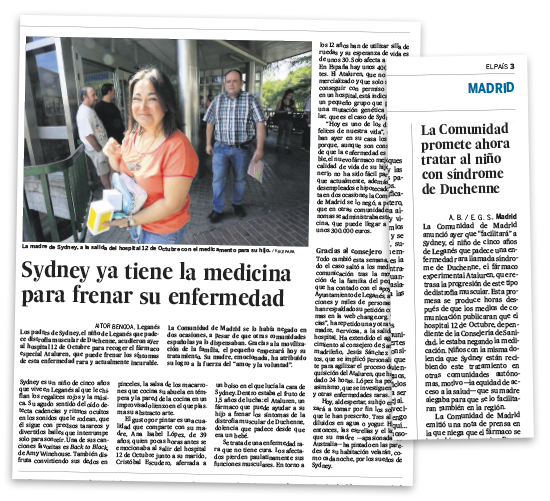
From January to August 2015, we detected three cases who had problems accessing ataluren who received special media coverage: one in Andalusia, another in the Valencia Region and the third in the Madrid Region. Here we will look more closely at the latter, the case of a boy named Sydney and his family. The drug, developed by PTC Therapeutics Limited, obtained commercialisation approval on 31 July 2014.
Ideally, we would also, at minimum, analyse the discourse elements of the case such as time, space, agents, responsibilities and arguments. Nonetheless, for this article we will focus only on the last point, arguments. To this end, we have analysed five news items in different media, as well as an official statement by the Madrid autonomous-region government’s Department of Health. The news items, in chronological order, are as follows: 1) «My son would have adequate treatment outside of Madrid» (Bengoa & Sevillano, 2015a). 2) Sydney’s mother’s statements in La Sexta Noticias (Cutillas & Serrano, 2015). 3) «The autonomous region now promises to treat the boy with Duchenne syndrome» (Bengoa & Sevillano, 2015b). 4) «The parents of the boy with Duchenne’s now have the medication for their son» (Efe, 2015). 5) «Sydney now has the medication to stop his disease» (Bengoa, 2015). Meanwhile, the statement published on the Department of Health’s website read: «The boy with Duchenne’s starts his treatment today» (Comunidad de Madrid, 2015).
«Improving quality of life, slowing down or stopping the progression of a disease is not a minor effect when we discuss rare diseases»
The key stages in the process, as they appear in the texts, would be: In July 2014 the orphan drug was approved for commercialisation. The family started to ask for it but the hospital where Sydney was receiving treatment denied access to the drug twice, the last time in July 2015. Other children in different Spanish autonomous regions (as well as in other countries) were already receiving the medication months before via compassionate use. The family decided to raise the problem publicly through the media and started collecting support signatures on the digital platform Change.org. The Madrid autonomous-region government’s Department of Health intervened and obtained the medication, with the help of the Ministry of Health, in just one day, when the usual procedure takes around one month. On 15 August 2015, just a few days after the case went public in the media, Sydney received the treatment.
We identified the following arguments in the analysed news, depending on whether they favour the request directly or indirectly (proactive), or they oppose it directly or indirectly (reactive). Proactive argumentation is based in the following arguments: firstly, the drug is useful, slows down the disease, is approved by the European Medicines Agency and was requested by Sydney’s doctor; secondly, the medication is already in use in other children in other autonomous regions thanks to compassionate use; and thirdly, although the treatment is expensive, only a reduced group of 10% of the 400 cases in Spain can receive the treatment, so the expenditure will be exceptional and limited.
On the other hand, reactive argumentation and its demonstrative elements also appear in media discourse. The arguments that support it are: firstly, the medicine does not cure the disease; secondly, it cannot be bought in Spain yet (although it is approved by the Spanish Agency of Medicines, the hospital does not respond to these types of requests); and thirdly, it is too expensive: more than 300,000 euros per year. Furthermore, all of this transpired in an era of compulsory budget cuts.
Therefore, in a single case, we can find the basic arguments and counter-arguments relating to the access to expensive orphan drugs. But emotion often overcomes rationality, which should take precedence in journalistic information. Let us pause for a moment on the first reactive argument: the drug does not cure the disease. They said about Sydney’s medicine that «it does not cure [the disease], but it does slow down [its] progression» (Bengoa & Sevillano, 2015a) or that «it delays the progression of this type of muscular dystrophy» (Bengoa & Sevillano, 2015b). As we have stated before, improving quality of life, slowing down or stopping the progression of a disease is not a minor effect when we discuss RDs.
A polarised debate of blacks and white
Our analysis concludes that the RD debate is currently polarised. It focuses, on the one hand, on the price of drugs and on the other, on their curative efficacy, without taking into account other positive effects of these medications beyond strictly curing. In times of crisis, with such an important issue as the life of patients, the debate tends to be simplified into blacks and whites, avoiding the shades of grey. Questions such as these are forgotten: Is society aware of the investment necessary to implement any medication? Do we have information on clinical trials and the research process in general? Are we trained to use our health system so investments reach the most important issues? Do we know what RDs are and what their specific medical and psychosocial characteristics are? How do the media contribute to knowledge of these issues?
We should keep all of these questions more present when we discuss health-care models. In any case, they can only be answered if we set up an adequate health training system for the citizenry with the help of the media.
References
Armayones, M., Requena, S., Gómez, B., Pousada, M., & Bañón, A. M. (2015). El uso de Facebook en asociaciones españolas de enfermedades raras: ¿Cómo y para qué lo utilizan? Gaceta Sanitaria, 29(5), 335–350. doi: 10.1016/j.gaceta.2015.05.007
Bañón, A. M., Fornieles, J., Solves, J. A., & Rius, I. (Coords.). (2011). Desafíos y estrategias comunicativas de las Enfermedades Raras. La investigación médica como referente. Valencia: CIBERER. Bengoa, A. (2015, 15 d’agost). Sydney ya tiene la medicina para frenar la enfermedad. El País. Retrieved from http://politica.elpais.com/politica/2015/08/14/actualidad/1439564446_804178.html
Bengoa, A., & Sevillano, E. G. (2015a, 11 August). Mi hijo tendría el tratamiento adecuado fuera de Madrid. El País. Retrieved from http://ccaa.elpais.com/ccaa/2015/08/10/madrid/1439240131_518758.html
Bengoa, A., & Sevillano, E. G. (2015b, 12 August). La Comunidad promete ahora tratar al niño con síndrome de Duchenne. El País, p. 3.
Budych, K., Helms, T. M., & Schultz, C. (2012). How do patients with rare diseases experience the medical encounter? Exploring role behavior and its impact on patient-physician interaction. Health Policy, 105(2–3), 154–164.
Comunidad de Madrid. (2015, 13 August). El niño con síndrome de Duchenne inicia hoy su tratamiento. Comunidad de Madrid. Retrieved from http://www.madrid.org/cs/Satellite?c=CM_Actualidad_FA&cid=1354515183117&language=es&pagename=ComunidadMadrid%2FEstructura
Cutillas, P., & Serrano, M. (2015, 11 August). Noticias La Sexta. [TV broadcast]. Madrid, España: La Sexta TV. Retrieved from http://www.lasexta.com/noticias/sociedad/reclaman-comunidad-madrid-que-medicacion-sidney-nino-anos-que-sufre-distrofia-muscular-duchenne_2015081100115.html
Douglas, C., Wilcox, E., Burgess, M., & Lynd, L. (2015). Why orphan drug coverage reimbursement decision-making needs patient and public involvement. Health Policy, 119, 588–596. doi: 10.1016/j.healthpol.2015.01.009
Efe. (2015, 14 August). Los padres del niño que sufre Duchenne ya tienen el medicamento para su hijo. Efe. Retrieved from http://www.efe.com/efe/espana/sociedad/los-padres-del-nino-que-sufre-duchenne-ya-tienen-el-medicamento-para-su-hijo/10004-2688235
Federación Española de Enfermedades Raras. (2009). Estudio sobre situación de necesidades sociosanitarias de las personas con enfermedades raras en España. Estudio ENSERio. Madrid: Caja Madrid.
Graf, J. M., & Frank, M. (2015). Rare is frequent and frequent is costly: Rare diseases as a challenge for health care systems. European Journal of Health Economics, 16, 113–118. doi: 10.1007/s10198-014-0639-8
Kesselheim, A., McGraw, S., Thompson, L., O’Keefe, K., & Gagne, J. (2015). Development and use of new therapeutics for rare diseases: Views from patients, caregivers, and advocates. Patient, 8, 75–84. doi: 10.1007/s40271-014-0096-6
Luzzatto, L., Hollak, C. E. M., Cox, T. M., Schieppati, A., Licht, C., Kääriäinen, H., & Remuzzi, G. (2015). Rare diseases and effective treatments: are we delivering? The Lancet, 385(9970), 750–752. doi: 10.1016/S0140-6736(15)60297-5
Marqués, J. (2015, 28 July). La Sanidad está atendiendo a 185.000 inmigrantes como a cualquier español. El economista. Retrieved from http://www.eleconomista.es/interstitial/volver/fords15/sanidad/noticias/6900297/07/15/La-Sanidad-esta-atendiendo-a-185000-inmigrantes-como-a-cualquier-espanol.html#.Kku8Z1j7O01EZEH
Picavet, E., Annemans, L., Cleemput, I., Cassiman, D., & Simoens, S. (2012). Market uptake of orphan drugs – a European analysis. Journal of Clinical Pharmacy and Therapeutics, 37, 664–667. doi: 10.1111/j.1365-2710.2012.01364.x
Picavet, E., Cassiman, D., & Simoens, S. (2014). Reimbursement of orphan drugs in Belgium: What (else) matters? Orphanet Journal of Rare Diseases, 9, 139. doi: 10.1186/s13023-014-0139-z
Rombach, S., Hollak, C. E. M., Linthorst, G., & Dijkgraaf, M. G. W. (2013). Cost-effectiveness of enzyme replacement therapy for fabry disease. Orphanet Journal of Rare Diseases, 8(1), 29. doi:10.1186/1750-1172-8-29
Schlander, M., & Beck, M. (2009). Expensive drugs for rare disorders: to treat or not to treat? The case of enzyme replacement therapy for mucoplysaccharidosis VI. Current Medical Research and Opinion, 25(5), 1285–1293. doi: 10.1185/03007990902892633
Solves, J., Bañón, A., & Rius, I. (2015). El OBSER como centro impulsor de la investigación social de las enfermedades minoritarias. In C. Peñafiel, & J. L. Terrón (Coords.), Estudios de comunicación y salud (pp. 131–156). Tenerife: Cuadernos Artesanos de Comunicación.
The Lancet (2015). Reducing the cost of rare disease drugs. The Lancet, 385(9970), 746. doi: 10.1016/S0140-6736(15)60420-2
ACKNOWLEDGEMENTS
This work is part of the R+D project Lenguaje y Cultura de la Salud, with project reference number CS02014-61928-EXP, funded by the State Secretariat for Research, Development and Innovation at the Spanish Ministry of Economy and Competitiveness. The theoretical reflections have also been developed under the Comunicación, Salud y Migraciones en Andalucía framework, with project reference number 2011/81, funded by the General Head for the Coordination of Migratory Policy of the Department of Employment of the Junta de Andalucía (Andalusian regional government).

